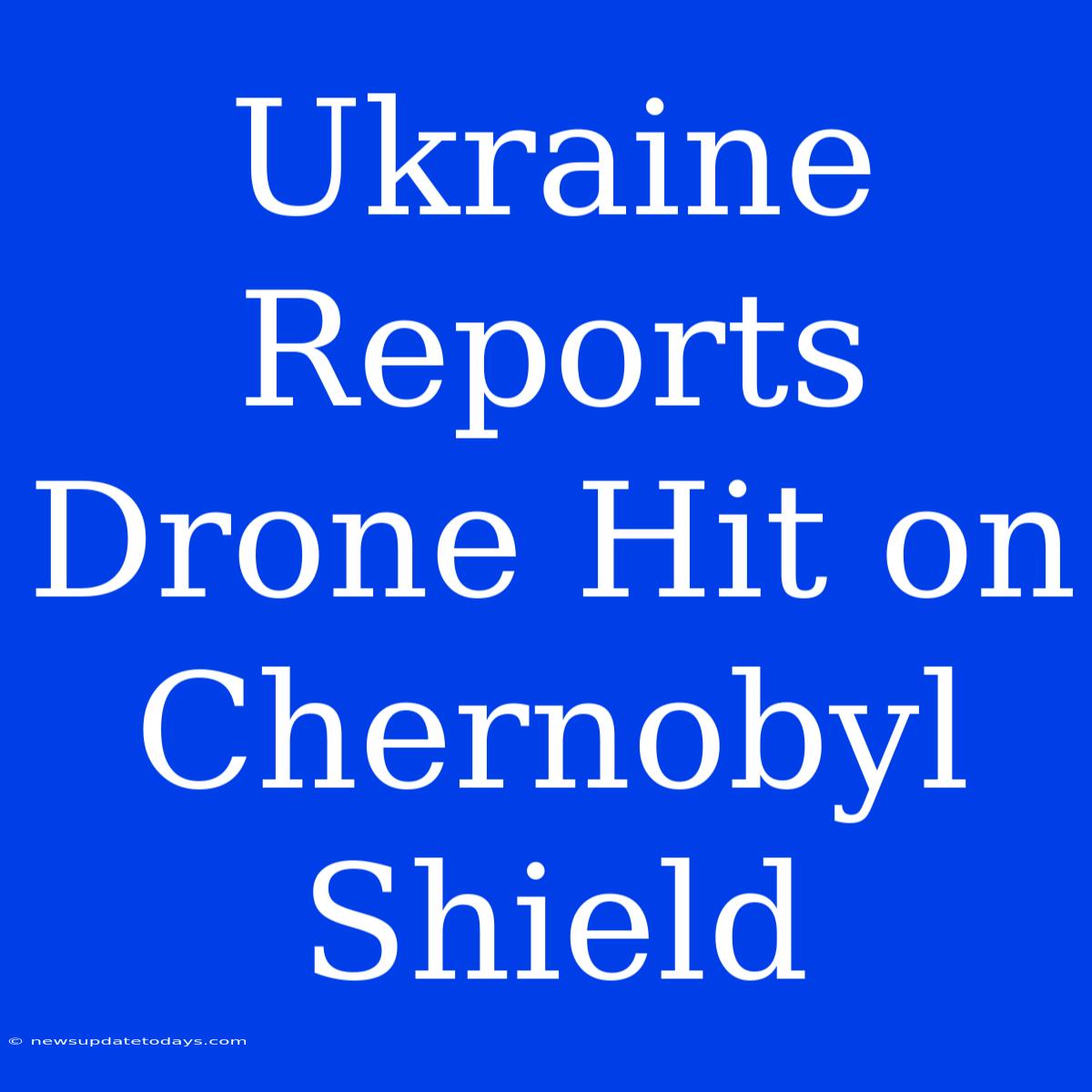Ukraine Reports Drone Hit on Chernobyl Shield: A Concerning Development
Ukraine's recent report of a drone strike impacting the Chernobyl Nuclear Power Plant's sarcophagus — the massive shield encasing the destroyed reactor — has sent shockwaves through the international community. This incident raises serious concerns about nuclear safety and the ongoing risks posed by the conflict. This article delves into the incident, exploring its potential implications and highlighting the broader context of the war's impact on nuclear facilities.
The Incident and its Potential Consequences
The Ukrainian authorities reported that a drone strike damaged the Chernobyl sarcophagus. While the extent of the damage is still being assessed, the very fact of an attack on such a critical structure is deeply troubling. The sarcophagus is crucial for containing radioactive materials from the 1986 Chernobyl disaster. Any compromise to its structural integrity could potentially lead to the release of harmful radiation, with devastating consequences for the surrounding environment and potentially wider areas.
Key questions remain unanswered:
- The extent of the damage: Precise details regarding the nature and severity of the damage are still emerging. Independent verification is crucial.
- The perpetrator: While Ukraine has blamed Russia, concrete evidence is still needed to definitively assign responsibility.
- Long-term consequences: The full impact of the drone strike on the long-term stability of the sarcophagus and the containment of radioactive materials is yet to be determined.
Broader Concerns about Nuclear Safety in Ukraine
The Chernobyl incident isn't an isolated case. The ongoing war has raised significant concerns about the safety and security of Ukraine's nuclear facilities. The Zaporizhzhia Nuclear Power Plant, Europe's largest, has also been repeatedly impacted by the conflict, with shelling and military activity posing a constant threat to its operations and safety protocols.
The risks are multifaceted:
- Physical damage: Shelling and other forms of military action can directly damage critical infrastructure, leading to potential meltdowns or radiation leaks.
- Operational disruptions: Power outages and disruptions to cooling systems due to the conflict can compromise reactor safety.
- Lack of maintenance: The ongoing war hinders essential maintenance and repairs, increasing the vulnerability of these facilities.
The International Response and the Need for De-escalation
The international community must respond decisively to these escalating risks. Continued monitoring and assessment of the situation are essential. Furthermore, a concerted diplomatic effort to de-escalate the conflict and establish security zones around nuclear facilities is vital to preventing a potential catastrophe. The risk of a nuclear incident, however small, is unacceptable.
Steps needed include:
- Increased international monitoring: Independent verification of the situation and regular assessments of the risks are crucial.
- Diplomatic pressure for de-escalation: The international community must exert pressure on all parties involved to ensure the protection of Ukraine's nuclear facilities.
- International cooperation on nuclear safety: Sharing of expertise and resources to enhance safety protocols and respond to potential incidents is paramount.
The drone strike on the Chernobyl sarcophagus underscores the devastating consequences of the war in Ukraine, extending beyond immediate human suffering to encompass grave risks to global nuclear safety. A swift and decisive response from the international community is crucial to mitigate these threats and prevent a potential catastrophe.

